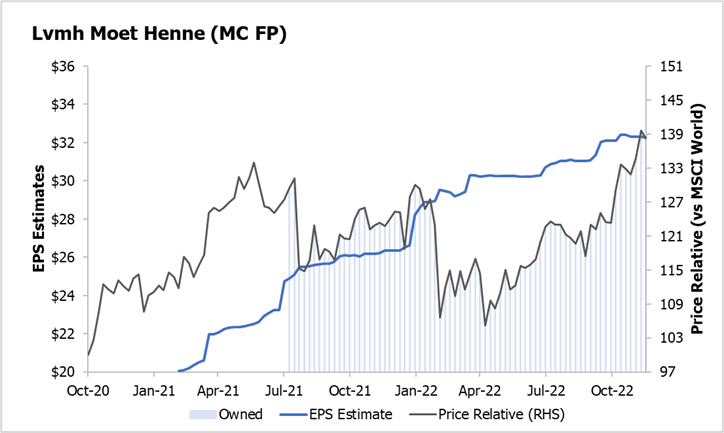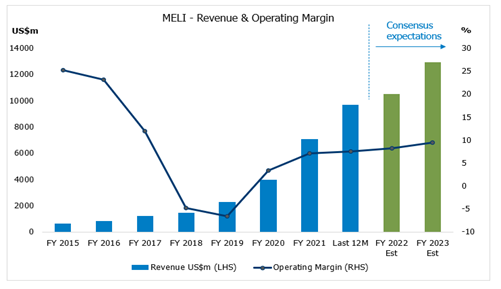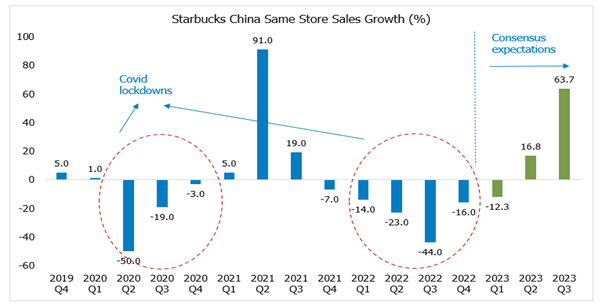NEWS

10 Feb 2023 - Review: The Price of Time (The Real Story of Interest) by Edward Chancellor
|
Review: The Price of Time (The Real Story of Interest) by Edward Chancellor Channel Capital January 2023 For professional investors and advisers only Edward Chancellor was already the author of two books in my top ten investment books list; Devil Take the Hindmost: A History of Financial Speculation and Capital Returns (the latter is a compendium of investment letters written by Marathon Asset Management and edited by Chancellor) and I would now add a third to that list. The Price of Time: The Real Story of Interest is an extraordinary book which illustrates the problems created by setting interest rates too low and by the rapid expansion of credit through the use of historical examples ranging from John Law's Mississippi Scheme to the Wall Street Crash and Japanese bubble of the nineteen eighties. Interest rates are the anchor for the valuation of asset prices and once they reach zero, any valuation can usually be justified, and bubbles occur. These bubbles have ALWAYS burst with enormous economic costs but that is only part of the damage wrought by low interest rates. As Chancellor notes today's ultra-low interest rates have contributed "to many of our woes, whether the collapse of productivity growth, unaffordable housing, rising inequality, the loss of market competition or financial fragility. Ultra-low rates also seemed to play some role in the resurgence of populism". As much as mainstream media would like you to believe that all of the UK's economic woes can be pinned on Liz Truss's mini budget, Chancellor explains that these issues have been years in the making and can be mostly traced back to the faulty economic thinking of the central banks. This book should be required reading for anyone involved in financial policy making from politicians to treasury officials and to central bankers. If I thought they would read it, I would willingly buy a copy for Andrew Bailey and the rest of the Monetary Policy Committee but I suspect they have little interest in reading anything which conflicts with the current economic orthodoxy no matter how wrong it has been. Author: Ian Lance, Fund Manager |
|
Funds operated by this manager: CC Redwheel Global Emerging Markets Fund, CC Redwheel China Equity FundKey information: No investment strategy or risk management technique can guarantee returns or eliminate risks in any market environment. Past performance is not a guide to future results. The prices of investments and income from them may fall as well as rise and an investor's investment is subject to potential loss, in whole or in part. Forecasts and estimates are based upon subjective assumptions about circumstances and events that may not yet have taken place and may never do so. The statements and opinions expressed in this article are those of the author as of the date of publication, and do not necessarily represent the view of Redwheel. This article does not constitute investment advice and the information shown is for illustrative purposes only. |

9 Feb 2023 - Emerging Markets: December quarter shows positive signs after a challenging 2022
|
Emerging Markets: December quarter shows positive signs after a challenging 2022 Pendal January 2023 |
|
IT was a difficult year for emerging equity markets in 2022, but the December quarter was more positive despite ongoing growth and inflation pressures in key economies. Last year Russia's invasion of Ukraine drove prices of key commodities sharply higher in an environment where inflation was already high and the outlook for interest rates was difficult. This was combined with ongoing economic weakness in China. The MSCI EM Index returned -20.1% in USD terms. Here is a recap of the main EM themes in 2022 and what we learned in the closing months of the year. RussiaIn Russia, the equity market in Moscow closed in February 2022 and did not re-open in a meaningful sense. With foreigners banned from selling, capital controls imposed and tight financial sanctions on the country, it became impossible for foreign investors to recover money from Russian equities. The impact of wide economic and trade sanctions mean the fundamental value of Russian equities is highly uncertain. GDRs and ADRs of Russian stocks have been suspended. MSCI deleted the Russia index from MSCI EM in March with a zero valuation. Growth countriesDespite rising global interest rates and bond yields, growth surprised to the upside in several traditionally high-beta, current account economies. Brazil, Indonesia, India and Mexico were among the better-performing major emerging markets in 2022. MSCI country index returns were +14.2% in Brazil, + 3.6% in Indonesia, -2% in Mexico and Brazil and Mexico benefited from strong exports, while central bank currency support allowed domestic demand growth in India and Indonesia. Meanwhile, higher energy prices, a sharp slowdown in global technology spending and a worse outlook for global growth meant that Korea and Taiwan both underperformed. MSCI country indices returned -29.4% and -29.8% respectively (in USD terms). ChinaDespite improving credit and monetary aggregates data, the Chinese economy remained weak in 2022 as policymakers prepared to stimulate. The key causes of the weakness were the ongoing policy-driven slowdown in the real estate sector and the impact of Covid lockdowns. In the final quarter of the year - facing street protests and mounting evidence of the negative economic effect of lockdowns - Chinese authorities began a controlled re-opening of the economy. MSCI China returned -21.9% in USD terms in 2022, but Chinese markets finished the year with a rising index and a sense of optimism Positive signs in December quarterThe fourth quarter of 2022 was more positive for emerging and global equity markets, despite ongoing growth and inflation pressures in key economies. October was difficult, but a shift to a more growth-friendly set of policies in China - and a sense that the outlook for US monetary policy is more positive - led to a stronger finish to the year. In the quarter MSCI EM Index returned +9.7% in USD terms. China's economy remained weak despite increasingly aggressive credit and monetary stimulus. But markets focused on the more positive change in policymaker intentions. MSCI China returned +13.5% in the quarter (USD terms). The outlook for US monetary policy also improved in the quarter. Although we saw interest rate hikes by the Federal Reserve, US CPI continued to trend lower in October and November. In early November the US ten-year bond yield moved below policy interest rates. This proved supportive for some emerging markets that had previously been held back by capital outflows. Which countries are well placedIn the December quarter we saw strong MSCI index USD returns in Colombia (+19.7%), South Africa (+18.3%) and Peru (+17.4%). Previous winners, especially those with high commodity exposure, generally underperformed in the quarter with softer commodity prices through the middle of the period and reallocation of investment flows towards China. MSCI Brazil returned + 2.4% and MSCI Indonesia -3.6% (both USD terms). The weaker oil price hit the Arab Gulf markets harder with MSCI Saudi Arabia returning -7.6%. UAE and Qatar also had negative returns. Author: James Syme, Paul Wimborne, and Ada Chan, co-managers of Pendal's Global Emerging Markets Opportunities Fund |
|
Funds operated by this manager: Pendal Focus Australian Share Fund, Pendal Global Select Fund - Class R, Pendal Horizon Sustainable Australian Share Fund, Pendal MicroCap Opportunities Fund, Pendal Sustainable Australian Fixed Interest Fund - Class R, Regnan Global Equity Impact Solutions Fund - Class R, Regnan Credit Impact Trust Fund |
|
This information has been prepared by Pendal Fund Services Limited (PFSL) ABN 13 161 249 332, AFSL No 431426 and is current as at December 8, 2021. PFSL is the responsible entity and issuer of units in the Pendal Multi-Asset Target Return Fund (Fund) ARSN: 623 987 968. A product disclosure statement (PDS) is available for the Fund and can be obtained by calling 1300 346 821 or visiting www.pendalgroup.com. The Target Market Determination (TMD) for the Fund is available at www.pendalgroup.com/ddo. You should obtain and consider the PDS and the TMD before deciding whether to acquire, continue to hold or dispose of units in the Fund. An investment in the Fund or any of the funds referred to in this web page is subject to investment risk, including possible delays in repayment of withdrawal proceeds and loss of income and principal invested. This information is for general purposes only, should not be considered as a comprehensive statement on any matter and should not be relied upon as such. It has been prepared without taking into account any recipient's personal objectives, financial situation or needs. Because of this, recipients should, before acting on this information, consider its appropriateness having regard to their individual objectives, financial situation and needs. This information is not to be regarded as a securities recommendation. The information may contain material provided by third parties, is given in good faith and has been derived from sources believed to be accurate as at its issue date. While such material is published with necessary permission, and while all reasonable care has been taken to ensure that the information is complete and correct, to the maximum extent permitted by law neither PFSL nor any company in the Pendal group accepts any responsibility or liability for the accuracy or completeness of this information. Performance figures are calculated in accordance with the Financial Services Council (FSC) standards. Performance data (post-fee) assumes reinvestment of distributions and is calculated using exit prices, net of management costs. Performance data (pre-fee) is calculated by adding back management costs to the post-fee performance. Past performance is not a reliable indicator of future performance. Any projections are predictive only and should not be relied upon when making an investment decision or recommendation. Whilst we have used every effort to ensure that the assumptions on which the projections are based are reasonable, the projections may be based on incorrect assumptions or may not take into account known or unknown risks and uncertainties. The actual results may differ materially from these projections. For more information, please call Customer Relations on 1300 346 821 8am to 6pm (Sydney time) or visit our website www.pendalgroup.com |

8 Feb 2023 - Glenmore Asset Management - Market Commentary
|
Market Commentary - December Glenmore Asset Management January 2023 Global equity markets were weaker in December. In the US, the S&P 500 fell -5.9%, the Nasdaq declined -8.7%, whilst the FTSE 100 (UK) outperformed (given its lower tech and growth exposure), falling just -1.6%. The driver of the declines was persistent inflation and hawkish commentary from central banks, which disappointed investors hoping for an end to the interest rate rises that have been the key headwind for equities in 2022. The ASX All Ordinaries accumulation index fell -3.3% in December. Whilst all sectors produced negative returns, mining was again the best performer boosted by expectations that the re-opening of China's economy will lift demand for commodities. Consumer discretionary, IT and REIT's all underperformed. In bond markets, the key US 10-year bond rate rose +10 basis points to close at 3.83%, whilst in Australia, the 10-year bond rate rose more materially, up +52bp to close at 4.05%. The A$/US$ was flat at US$0.68. Review of global stock market indices in 2022 The table below shows how some of the relevant equity indices performed in 2022. Some of the key takeaways:
Looking forward to 2023, our view is that having underperformed materially in 2022, small/mid cap stocks on the ASX in particular, are poised to provide some excellent opportunities given historically this part of the ASX has been a very profitable segment, due to small/mid-caps typically having superior earnings growth prospects vs large caps. In terms of the growth and technology sectors, we believe that whilst much of the sell off of highly priced stocks has likely played out, given our preference for established business generating profits and cashflow, we remain cautious on this part of the market. Funds operated by this manager: |

7 Feb 2023 - Tips on Managing your own Super
|
Tips on Managing your own Super Marcus Today January 2023 |
|
I had a question about Portfolio Management from a Member. I sent him this. It might interest you. Two processes run side-by-side:
STOCK PICKING AND TIMING Stock picking and timing involves a few basic tenets that you might adopt. They include (and apologies for the simplicity):
MANAGING MARKET RISK As you probably know by now, I believe you can time the market and everyone who says you can't is an inexperienced amateur that has heard too many Buffett quotes or is a financial professional that has an interest in you doing nothing (because they don't have to make decisions but still get your fee). You can manage market risk by raising and lowering your cash weighting. One of the great advantages of managing your own money as an individual without oversight is that you can go to 100% cash. Something the big funds could never do. This allows you to protect capital in a bear market, whereas most of the major funds have no choice, they have a mandate which forces them to hold the market through thick and thin. They will play with a small cash weighting (5-15%?), but it is immaterial come a big market sell-off. They will never get out of the market in a bear market. You can. How much cash you hold is a daily debate, and there are no rules. I simply wake up every morning and make a decision. I rarely get scared by the market but will rapidly run up cash levels if I think its going wrong. And reverse it again when the squall is over. When it comes to running up the cash, I may sell a few stocks outright (the ones that are not performing) but will essentially take the top off every stock rather than stock pick. The main issue is to run up the cash and not get cute about which stocks to do it with. When it comes to this decision - read the Strategy section - it's what it's all about! Author: Marcus Padley, Founder of Marcus Today |
|
Funds operated by this manager: Marcus Today Equity Income SMA, Marcus Today Growth SMA
|

6 Feb 2023 - New Funds on Fundmonitors.com
|
New Funds on FundMonitors.com |
|
Below are some of the funds we've recently added to our database. Follow the links to view each fund's profile, where you'll have access to their offer documents, monthly reports, historical returns, performance analytics, rankings, research, platform availability, and news & insights. |
|
|
|||||||||||||||||||
| Harbour T. Rowe Price Global Equity Fund | |||||||||||||||||||
|
|||||||||||||||||||
 |
|||||||||||||||||||
| Cordis Global Medical Technology Fund | |||||||||||||||||||
|
|||||||||||||||||||
| View Profile | |||||||||||||||||||
 |
|||||||||||||||||||
|
Rixon Income Fund |
|||||||||||||||||||
|
|||||||||||||||||||
| View Profile | |||||||||||||||||||
|
Want to see more funds? |
|||||||||||||||||||
|
Subscribe for full access to these funds and over 700 others |

6 Feb 2023 - Cycle is not a dirty word
|
Cycle is not a dirty word Airlie Funds Management January 2023 |
|
January 2023 In a perfect world, every stock we own would be net cash, generate high returns, be run by a world-class management team, and cheap. In practice, the presence of the first three criteria usually means that the investment falls over at the last criterion. Just like we don't tend to stumble across $500k houses in Point Piper with Sydney Harbour views, the stock market is rational: it usually bids the best businesses up to the highest price. This means we usually have to compromise on something. The one thing we never compromise on is the balance sheet - a business must have the appropriate financial structure for its business model or else we equity investors may find out exactly where we rank in the capital stack! Assuming the balance sheet is appropriate, we rely on our judgement as investors to juggle the trade-offs between business quality, management quality and valuation. One hunting ground where we tend to find businesses with attractive valuations is when everyone is very worried about "the cycle". For example, with a consensus view that a recession looks likely in the US, Europe and potentially Australia, we are seeing opportunities in businesses that are leveraged to the building cycle. The first thing to figure out when sifting through these ideas is whether the business sells a commodity. In investing it pays to have an open mind: cyclical businesses that sell commodity products can be great investments; one need look no further than BHP to find such an example. However, we have a few requirements. Firstly, we want to see a pristine, (preferably net cash) balance sheet. Returns are outside the company's control - typically dictated by the level of demand for a commodity and hence the price. Financial leverage combined with operating leverage can mean lights out. Second, we look for evidence of good industry structure. This means as few players as possible. Very few things are "pure" commodities. Often there are hidden barriers to entry - start-up costs, distribution networks or captured supply chains - that keep industries rational and cosy. This seems particularly prevalent in Australia. The tyranny of distance, both from global supply chains and having a small population spread across a large country, means a fixed profit pool that often doesn't support a third or fourth entrant. Two or three rational market players can see everyone making OK returns on their capital. Finally, we want a compelling valuation. If there's no intangible franchise value in a business, if it just makes bog-average products, you don't want to pay a high price for it. Luckily, the tendency for investors to tie themselves in knots trying to forecast where we are in a cycle tends to throw off frequent opportunities to buy cyclical businesses at good prices. Unluckily, those opportunities usually only come around when the cycle looks particularly on the nose. As such, we find you have to be brave and also be prepared to be early (potentially very early!), and willing to add to a position if it continues to fall as the cycle deteriorates. The risk in investing in cyclical commodity businesses is that, as Howard Marks says, to be too far ahead of your time is indistinguishable from being wrong. It is for this reason that we rarely make these initial investments our largest positions, preferring a smaller position size that we can add to should the leading indicators deteriorate further. One business we feel ticks these boxes is CSR , a recent addition to the portfolio. The company manufactures and distributes plasterboard, aerated concrete, bricks, fibre cement, insulation and other products under a range of different brands. CSR also has a 25% effective interest in the Tomago aluminium smelter in Newcastle. We are under no illusions as to the underlying quality of this business. With perhaps the exception of aerated concrete, where CSR has exclusive rights to the Hebel brand, the bulk of what CSR makes, and sells are commodity products. Returns will be cyclical, dominated by the level of residential building activity in Australia. Our thesis in owning CSR is that (a) the value of the surplus property underpins the bulk of the valuation, such that we aren't paying a very high residual price for the building products business, and (b) this building products business is probably a shade higher quality than it has been historically; mid-cycle margins and returns for CSR's building products should be higher this decade than the prior decade due to improving industry structure. Throwing in a rock-solid balance sheet ($142m net cash) makes the investment proposition stack up for us, albeit this is not without risks. Our valuation is based on our assessment of mid-cycle EBIT; however, we will be wrong on this assessment if industry rationality breaks down as demand falls (that is, if we see evidence of price-cutting to chase market share). Building products business: average quality but industry structure has improvedFrom an earnings perspective, the three most important businesses in CSR's Building Products portfolio are plasterboard (Gyprock), Bricks and Hebel (aerated concrete), making up a combined c75% of EBIT.
CSR has a dominant market share position in each of the plasterboard, brick and aerated concrete markets as a function of recent industry consolidation (Gyprock, PGH Bricks) and product exclusivity (Hebel). As per the below chart, EBIT margins are highly cyclical: in a great year (like FY23F) CSR is on track to make a 14% EBIT margin; in a bad year (2013) it made only 8% EBIT margins. We believe a return to these lows is unlikely for reasons we step through below. As such, we forecast trough EBIT margins of 10% rather than a historic 8%, and mid-cycle EBIT margins of 12% rather than a historic 10%.
Plasterboard is the most important business, accounting for over 50% of the building products' EBIT. East-coast plasterboard is a three-player market, with CSR and Knauf enjoying c35-40% market share each, and ETEX 20%-30%. Boral used to be the main player against which CSR competed; however, Knauf recently effectively bought Boral out of its local assets in 2021. Boral historically had a reputation as the competitor you didn't want in any market, as it leant heavily on price to chase market share during downturns. This weighs on returns for all players. We view the exit of Boral from plasterboard as a net positive for industry rationality. While plasterboard is undoubtedly a cyclical business, our discussion with industry participants suggests plasterboard is at the lower end of cyclicality - the plasterboard cost base is fairly variable as you can pull shifts off when demand declines, protecting EBIT margins. We believe EBIT margins vary by only a few percentage points through the cycle. The main driver of our assumption that CSR is unlikely to retest its prior EBIT margin lows is the improved industry structure in bricks. The Australian bricks market has gone from a three-player market to two after CSR bought Boral out of their joint venture in late 2016. A bricks business has a huge fixed-cost base; a brick kiln runs 24/7, so it's hard to pull costs out in a downturn. Conversations with industry participants suggested CSR's bricks business was breakeven at best during the prior housing downturn of 2010-2013. Management is also proactively managing the asset base to recycle unrequired brick sites into the property portfolio for alternative uses. For example, CSR were able to close a brick manufacturing site at Darra in Queensland and push the capacity through an upgrade at their NSW site in Oxley, freeing up the Darra land to be redeveloped and sold. We estimate Darra could generate over $100m in EBIT for the business over several years via the sale of subdivided land. This network optimisation reduces the risk that high-fixed-cost brick plants will swing to EBIT or cash loss-making at the bottom of the cycle. These improvements in industry structure lead us to an estimate of mid-cycle EBIT for building products of c$200m. (Note the building products business is on track for >$250m EBIT this year.) Deducting the full corporate costs of c$25m from this division gives mid-cycle group EBIT of $175m ex-aluminium. Property underpins 65% of market capitalisationCSR's property division looks to maximise financial returns of surplus former manufacturing sites and industrial land. The bulk of the value of this division was a 'gift from the gods': in what was surely one of the most sizeable value transfers in recent Australian corporate history, CSR was able to acquire Boral's 40% interest in its brick JV for $126m in 2016. Extraordinarily, this included 12 manufacturing operations and mothballed sites, including the aforementioned Darra site, as well as 140ha of developable land at Badgerys Creek in Western Sydney. This is valuable land, located on the southern boundary of the future Western Sydney Airport. CSR recently sold a small parcel of this land at $4.5m/ha, implying the remaining site could be worth >$600m. Cheers, Boral! This episode is another reminder of why we put a huge emphasis on the quality of a management team. It's not always around the value creation they can achieve, but also avoiding the significant value destruction that can occur if a business is poorly run. CSR have had their total "as is" property book independently valued at $1.5bn ($1.1bn for 450ha of Western Sydney property, and $400m for additional freehold properties), which compares to a market capitalisation of $2.3bn. While this value will be realised over the long term via redevelopment and sale of surplus land, this implies a residual value for the business of c$800m, which is cheap when set against our estimate of mid-cycle EBIT of $175m (4.5x EBIT). We note peer Fletcher Building currently trades on just under 8x arguably peak-cycle EBIT. This also ignores any earnings from aluminium. To us, CSR is not a particularly high-quality business, and the cycle is clearly unsupportive from here. However, we believe there has been an improvement in the quality of the business as a result of favourable industry consolidation, and see compelling value in the combination of OK assets, solid property underpinning, and a net cash balance sheet that provides optionality through a downturn. Author: Emma Fisher, Portfolio Manager Funds operated by this manager: Important Information: Units in the fund(s) referred to herein are issued by Magellan Asset Management Limited (ABN 31 120 593 946, AFS Licence No. 304 301) trading as Airlie Funds Management ('Airlie') and has been prepared for general information purposes only and must not be construed as investment advice or as an investment recommendation. This material does not take into account your investment objectives, financial situation or particular needs. This material does not constitute an offer or inducement to engage in an investment activity nor does it form part of any offer documentation, offer or invitation to purchase, sell or subscribe for interests in any type of investment product or service. You should obtain and consider the relevant Product Disclosure Statement ('PDS') and Target Market Determination ('TMD') and consider obtaining professional investment advice tailored to your specific circumstances before making a decision to acquire, or continue to hold, the relevant financial product. A copy of the relevant PDS and TMD relating to an Airlie financial product or service may be obtained by calling +61 2 9235 4760 or by visiting www.airliefundsmanagement.com.au. Past performance is not necessarily indicative of future results and no person guarantees the future performance of any financial product or service, the amount or timing of any return from it, that asset allocations will be met, that it will be able to implement its investment strategy or that its investment objectives will be achieved. This material may contain 'forward-looking statements'. Actual events or results or the actual performance of an Airlie financial product or service may differ materially from those reflected or contemplated in such forward-looking statements. This material may include data, research and other information from third party sources. Airlie makes no guarantee that such information is accurate, complete or timely and does not provide any warranties regarding results obtained from its use. This information is subject to change at any time and no person has any responsibility to update any of the information provided in this material. Statements contained in this material that are not historical facts are based on current expectations, estimates, projections, opinions and beliefs of Airlie. Such statements involve known and unknown risks, uncertainties and other factors, and undue reliance should not be placed thereon. Any third party trademarks contained herein are the property of their respective owners and Airlie claims no ownership in, nor any affiliation with, such trademarks. Any third party trademarks that appear in this material are used for information purposes and only to identify the company names or brands of their respective owners. No affiliation, sponsorship or endorsement should be inferred from the use of these trademarks.. This material and the information contained within it may not be reproduced, or disclosed, in whole or in part, without the prior written consent of Airlie. |

3 Feb 2023 - 2023 Global macro outlook: Ten predictions
|
2023 Global macro outlook: Ten predictions Nikko Asset Management December 2022 No single catch-phrase epitomises the 2023 global macro outlook, but here are ten predictions: 1. 2023 will be a year like no other. Investors should not rely heavily on traditional models of previous economic and financial market recoveries, especially ones that worked best since the mid-1990s, as we are entering a unique era; rather, they should maintain a somewhat cautious and balanced perspective, with targeted risk-taking in select countries, sectors and stocks, as described in our other 2023 outlook pieces. Indeed, active stock selection, in particular, will be more important than ever in 2023, so special attention is required in selecting managers who have excelled in the last several challenging years. 2. Re-balancing and China's positive pivots: China, after a hesitant start, will likely see much improved economic growth in 2023 while most of the rest of the world will be sluggish. Its recent surge in the financing of property development was a major pivot in policy that will greatly support economic growth, although the previous mania for purchasing property and the economy's reliance on such will continue to be diminished. This should help keep global commodity prices fairly stable. Also, the sudden pivot towards détente in foreign policy in mid-November has considerably brightened the 2023 global outlook. There will be, however, many challenges to this détente, and as it is not firmly rooted yet. Especially with the likely visit to Taiwan by the new US House Republican leadership and continued trade restrictions, there is a chance that any rapprochement may prove short-lived. Clearly, both "sides" will benefit from a respite in economic and political tensions. For its part, China will likely resume purchases of US Treasuries after major sales in 2022. It also desires a more stable backdrop as it addresses the weakness in its housing sector and parts of its financial markets, while also improving the troubling situation for ordinary citizens and local governments. Meanwhile, US and other countries' corporations, especially Apple, hope that their factories there can keep producing despite various restrictions, that China will remain an important client and that the entire global supply chain will continue healing. 3. COVID will remain a factor, especially China's citizens' fear of such. We have predicted that China would open up the country sooner than expected, though gradually and somewhat furtively, but such has been accelerated by the recent protests and the increasing weakness in the economy. While cases and casualties will likely rise, the government clearly wishes to promote economic growth now and springtime will likely witness a near full opening in China, especially after the National People's Congress in March. We expect that the fears of such there, and globally, will abate in healthy, sustainable fashion. 4. Central banks, excluding that of Japan, will keep rates high to hamper "second-round effects." These "effects" will be the key factor in how inflation evolves. Labour's wage demands, coupled with the strikes and harmful supply shocks usually affiliated with such, obviously stand out, but the perceived "pricing power" of corporations and landlords will also be key, and they all will be watching how determined central banks will be to maintain high rates given the increasing political pressure as economies weaken further. This is most true in Europe, where inflation is the highest in the developed world and where labour is very powerful, especially in key political, infrastructure and economic channels. The media is not widely covering the strike actions, so investors should often screen the news themselves for such. Conversely, countries with low labour demands should have an advantage, especially Japan and much of Asia excluding Korea. 5. Countries with too much concentration in the tech hardware sector may not flourish, as industry fundamentals will remain challenged, including the upcoming oversupply of semiconductors over the intermediate term as countries around the world rush to build their own fabs for national security and other reasons. Due to this, semiconductor production equipment manufacturers, however, should see improved orders after their recent cutbacks. 6. For overall global risk markets, one should expect neither "Doom and Gloom" ahead, nor a Goldilocks scenario. The US equity market is not cheap, so a strong rally seems unjustified from December levels, but most other countries are quite inexpensive and could perform reasonably well. Europe, however, is suffering from unique difficulties, so it may remain inexpensive. Within this backdrop, stock and sector selection will clearly be the most important key to achieve positive returns. 7. Avoiding Short-term scares; many macro-economic, corporate earnings and credit shocks likely lie ahead in the short-term, as the global economy descends further into a semi-stagflationary period in which former excesses are "cured;" however, this is part of the healing process in which the intermediate-term outlook is actually improving, so investors should not panic in the short-term. Indeed, as for corporate earning shocks, as long as such are not far below analysts' estimates, investors may forgive such, especially if the outlook remains positive. 8. The global crypto infrastructure and some other ultra-growth industries are likely to continue to encounter troubles. The recently exposed lack of due diligence by many institutional investors is shockingly disappointing, as were the attitudes and practices of many industry leaders. Partly because of this, most "growth at any price" companies and industries will now be heavily scrutinized by venture capitalists, public-market investors, banks and regulators. This is bound to expose other problems that could spread. Indeed, ultra-growth companies will likely need to show a clear path to profitability on a GAAP basis in order to entice funding; however, such companies definitely exist and should benefit as they will likely attract much more investor interest. 9. Geopolitics will continue to be a factor: the "Clash of Systems and Philosophy" will clearly continue, especially with Russia, Iran and China pursuing their own path. The Russia-Ukraine war will continue through 2023, but possibly in much less bloody way, so this may calm risk markets. One also needs to keep a careful eye on the Middle East, especially Iran, as tensions remain greatly elevated given its internal problems and an even more assertive new Israeli government. As mentioned above, it will be important to watch Taiwan as well. One hesitates to mention North Korea, as it is a perennial, unpredictable worry, but hopefully China will restrain it from its increasingly provocative actions so that both "sides" can reduce the tension. 10. Troublesome domestic politics will be important; fiscal stimulus globally is already greatly constrained due to fears of its inflationary effects and as interest expenses surge, but even the normal functioning of fiscal affairs may encounter significant turbulence. In the US, the Republican control of the House of Representatives is bound to cause major disputes in 2023 and if a financial market or economic accident somehow occurs, action will need to be taken. If it is not taken, much like the initial stages of the Global Financial Crisis, financial markets could revolt. House investigations of various political matters are also likely to cause great discord in 2023, as well. In Europe, political dissent beyond strikes is likely to be intense especially as energy subsidies wane due to the need for fiscal restraint. Asia, however, looks much calmer on the political front. ConclusionWe greatly hope that these comments, as well as the other outlook pieces, will prove useful to our investors and we are always willing to address their thoughts and questions. We could all use a bit of good luck in the year ahead after the tumult of the last few years. Author: John Vail, Chief Global Strategist Funds operated by this manager: Nikko AM ARK Global Disruptive Innovation Fund, Nikko AM Global Share Fund, Nikko AM New Asia Fund, Disclaimer Please note that much of the content which appears on this page is intended for the use of professional investors only. This material has been prepared by Nikko Asset Management Europe Ltd (NAM Europe) which is authorised and regulated in the United Kingdom by the FCA. This material is issued in Australia by Yara Capital Management Limited (formerly Nikko AM Limited) ABN 99 003 376 252, AFSL 237563. To the extent that any statement in this material constitutes general advice under Australian law, the advice is provided by Yarra Capital Management Limited. NAM Europe does not hold an AFS Licence. Effective 12 April 2021, Yarra Capital Management Limited became part of the Yarra Capital Management Group. The information contained in this material is of a general nature only and does not constitute personal advice, nor does it constitute an offer of any financial product. It is for the use of researchers, licensed financial advisers and their authorised representatives, and does not take into account the objectives, financial situation or needs of any individual. For this reason, you should, before acting on this material, consider the appropriateness of the material, having regard to your objectives, financial situation and needs. The information in this material has been prepared from what is considered to be reliable information, but the accuracy and integrity of the information is not guaranteed. Figures, charts, opinions and other data, including statistics, in this material are current as at the date of publication, unless stated otherwise. The graphs and figures contained in this material include either past or backdated data and make no promise of future investment returns. Past performance is not an indicator of future performance. Any economic or market forecasts are not guaranteed. Any references to particular securities or sectors are for illustrative purposes only and are as at the date of publication of this material. This is not a recommendation in relation to any named securities or sectors and no warranty or guarantee is provided. Portfolio holdings may not be representative of current or future investments. The securities discussed may not represent all of the portfolio's holdings and may represent only a small percentage of the strategy's portfolio holdings. Future portfolio holdings may not be profitable. Any mention of an investment decision is intended only to illustrate our investment approach or strategy and is not indicative of the performance of our strategy as a whole. Any such illustration is not necessarily representative of other investment decisions. Portfolio holdings may change by the time you receive this. Any reference to a specific company or security does not constitute a recommendation to buy, sell, hold, or directly invest in the company or its securities. The information set out has been prepared in good faith and while Yarra Capital Management Limited and its related bodies corporate (together, the "Yarra Capital Management Group") reasonably believe the information and opinions to be current, accurate, or reasonably held at the time of publication, to the maximum extent permitted by law, the Yarra Capital Management Group: (a) makes no warranty as to the content's accuracy or reliability; and (b) accepts no liability for any direct or indirect loss or damage arising from any errors, omissions, or information that is not up to date. Yarra Capital Management. Copyright 2022. |

2 Feb 2023 - Is private debt ready for recession?

1 Feb 2023 - Did Amazon cancel Christmas?
|
Did Amazon cancel Christmas? Alphinity Investment Management December 2022 Christmas fever was running high with beautifully decorated trees and colourful lights cheering us on every corner. The tone was however a lot less cheery when Amazon recently reported their 3Q22 results and downgraded their 4Q22 revenue guidance. Similar sentiments were reflected across a large range of consumer names noting pricing pressure and a lack of holiday shopping visibility. There is also clear evidence that inventories have been building across US retailers with supply chain constraints lifting and post covid "revenge spending" tapering off. We maintain our preference for companies with strong pricing power, exposure to the more resilient high-end consumer and companies with global reach that can also benefit from a China reopening. LVMH, MercadoLibre and Starbucks are three diverse consumer names that we believe can withstand a less cheery Festive Season. Why Amazon's revenue downgrade is a concernAmazon is a behemoth e-commerce platform with tentacles across most consumer channels and verticals. They have access to extensive supporting data that can paint a clear picture of the general consumer outlook. Historically we have seen Amazon downgrade earnings expectations, but this is the first time in many years that they've downgraded revenue expectations. The fourth quarter outlook is specifically prevalent given that it includes big spending days in the US, such as Black Friday, Cyber Monday, and Christmas. Amazon cited slowing consumer trends particularly in the US and Europe and a lack of holiday season visibility. Whilst there were several consumer companies that reported relatively good 3Q22 results, outlook statements echoed Amazon's concerns and remained cautious around peak season sales and beyond. Consumers are still nervous and hunting for bargainsSofter economic data points are now becoming more frequent following the flurry of central bank interest rate hikes year to date. The US composite PMI slipped to just 44.6 in December, US housing continues to cool down, layoffs are surging, and consumer sentiment remains at levels last seen in 2009 despite a recent recovery. US consumer spending has remained relatively resilient during 2022 as households continued to draw on excess savings accumulated during the pandemic. Post COVID pent up demand have been driving a revenge spending cycle focused on travel, leisure, occasion-based spending (for example weddings), beauty, entertainment and more. Recent data points however suggest a softening in these trends with consumer wallets facing more constraints (softer macro/inflationary pressures). According to Evercore ISI's December company surveys, current holiday sales remain focused on consumer staples products while discretionary category sales are slow, and consumers are focused on discounted goods. More broadly pricing power continues to soften across industries from elevated levels as global growth slows. Pricing power continues to soften across industries
Source: Evercore ISI, December 2022 Signs of inventory build are intensifyingMany companies across a range of sectors reported higher inventory levels during the 3Q22 results season. A result of continued supply chain disruption improvement and softer demand. Target (US general merchandise discount store) and Nvidia (inventor of graphics processing units) were two examples of big bellwethers that guided to big inventory build, - adjustments, and/or write-offs. Our detailed analysis of inventory levels for a sample of 30 global consumer stocks across retailing, food, and apparel, suggest a sobering level of inventory build across the consumer landscape. We looked at the change in inventory as a % of sales and inventory days (average number of days a company holds its inventory before selling it) between the latest reported quarterly numbers (3Q22) and the same quarter last 2021 heading into the Festive Season (3Q21). The results showed that there are only 3 stocks with lower inventory days and only 5 stocks with lower inventory as a % of sales in our sample. There is specifically a clear inventory build in sportswear with Adidas, Puma, and Lululemon the worst offenders. For example, Adidas's inventory to sales is now almost 30% up from c17% at 3Q21 and Lululemon's inventory days are up from 126 days to 150 days (see chart below for the change in Inventory Days) over the same period. Increased inventories a concern across many consumer names
Source: Alphinity, Bloomberg, December 2022 Positioning in companies with strong inventory management and pricing powerAlphinity invests in quality companies that are in an earnings upgrade cycle that trade at a reasonable valuation. In our view, excellent inventory management skills and strong pricing power will be critical in determining the winners vs losers in the 2023 consumer race. Companies that can withstand margin pressures in an environment where business offload excess inventory and consumers hunt for bargains. Investing in quality companies at the right time in their earnings cycles
Source: Alphinity, December 2022. Note: Alphinity currently owns LVMH, MELI & SBUX, but not AMZN & TGT. Pricing power remains critical: LVMH, the world's largest luxury group, is currently our biggest position in our Global Equity Fund as we head into 2023. Demand for their luxury products have remained resilient despite slowing macro trends, with the company able to pass through inflation given their very price insensitive customer base. LVMH has been in an impressive earnings upgrade cycle since 2020, delivering earnings growth across sub-segments, brands and increasingly across geographies. Management also remains confident in a demand recovery in China once restrictions have lifted. Despite the relative strong performance of the last 12 months, the company still trades at an undemanding 22x 12-month forward Price to Earnings, which is at the bottom of its 5-year trading range (20-35x) LVMH - Strong pricing power & resilient demand drive an impressive earnings upgrade cycle
Source: Alphinity, Bloomberg, December 2022 The US consumer is not the global consumer. Certain emerging market countries, such as Brazil, are ahead in the business cycle vs major developed markets, where inflation, interest rates and unemployment are already past peak levels. MercadoLibre (MELI), is the largest e-commerce and fintech company in Latin America, with over 88 million subscribers and exposure across 15 countries. MELI has a unique eco-system model with their marketplace, payments, credit, logistics and other services all reinforcing each other, driving strong top line growth. MELI's reported very strong 3Q22 results well above their peer group, with accelerating sales growth and margin expansion reflective of their core strengths, including their broad category base, continued logistics improvements and a step change in marketing. Management noted they continue to "manage for growth and market share leadership" MELI consistently delivering strong Revenue growth and Operating margin expansion
Source: Bloomberg, December 2022 China reopening will be an important earnings driver of 2023 earnings for multi-national companies: Starbucks (SBUX), is the leading specialty coffee retailer in the world, operating across more than 80 markets through company-operated and franchised stores. SBUX experienced a tough time during COVID, with many store closures resulting in a big drop off in sales and margins across all markets. Looking ahead, we expect their new strategy to drive a strong recovering in same store sales growth across their international markets and a return to profitability. SBUX is also well positioned to benefit from a China reopening, where they continued to open new stores during the pandemic (going from 4123 stores at the end of 2019 to 6000), that can return to profitability. China Same Store Sales Growth - Potential to rebound on reopening
Source: Bloomberg, December 2022 We will only know during the first quarter of 2023 if Amazon did indeed cancel Christmas and if general market jitters were justified. Regardless, good inventory management, strong pricing power and the right geographical exposures will remain critical elements for consumer companies as they navigate yet another tough macro year ahead. At Alphinity we will continue to do bottom-up analysis and global company visits to find the highest quality companies that have these attributes and can deliver higher than expected earnings. Author: Elfreda Jonker (Client Portfolio Manager) This information is for advisers & wholesale investors only. |
|
Funds operated by this manager: Alphinity Australian Share Fund, Alphinity Concentrated Australian Share Fund, Alphinity Global Equity Fund, Alphinity Sustainable Share Fund Disclaimer |



